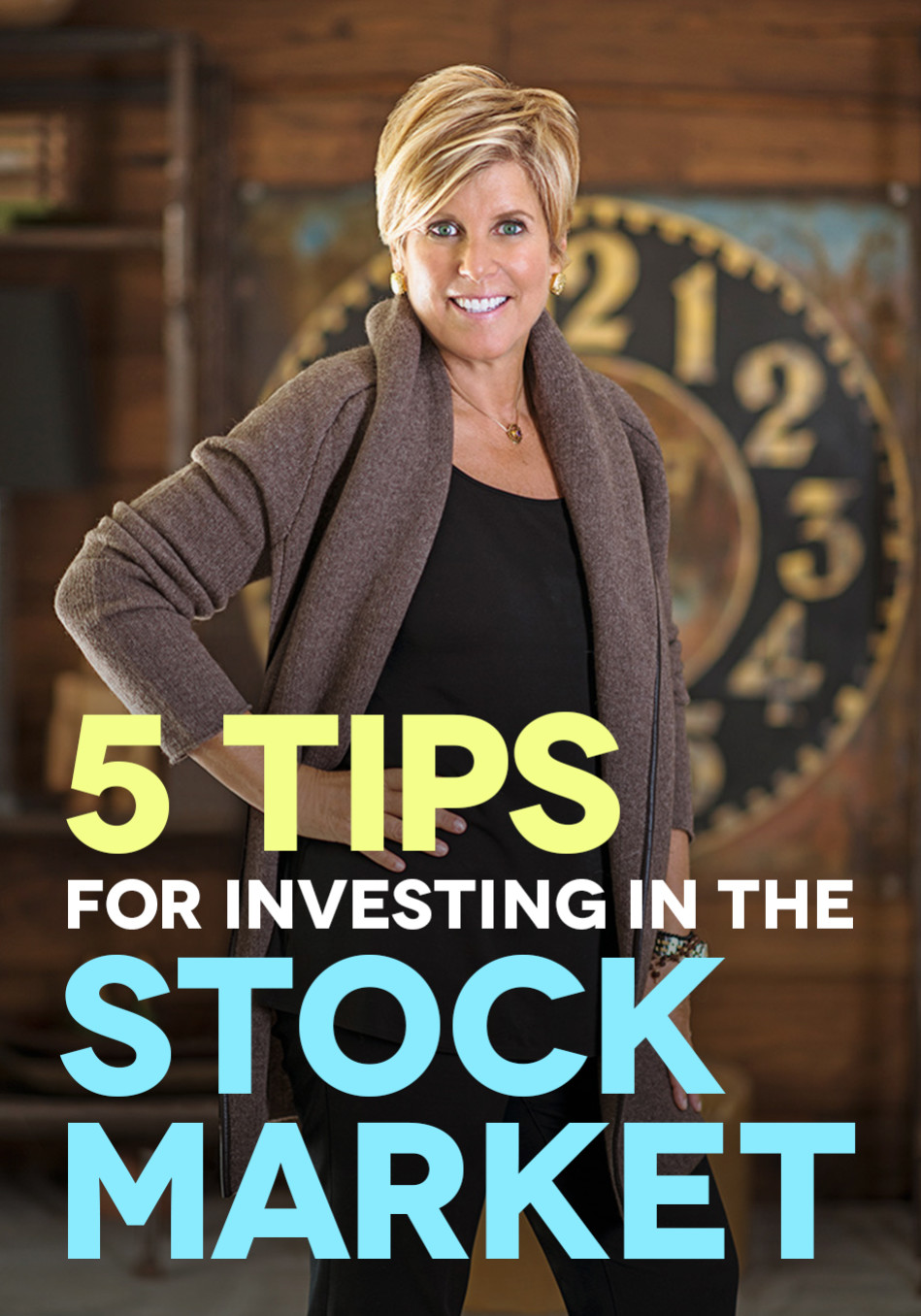Suze Orman's 5 Tips for Investing in the Stock Market
The financial expert helps you get in the investing game.

Photo: Sean Lee Davies
Only half of middle-class Americans own stocks. That's a drop of 24 percent since 2008, when the global financial crisis hit. But stocks are still the most lucrative investment: Since 1926, their average annualized rate of return has been nearly 10 percent, and they generate higher gains over time than cash or bonds. If you're feeling fearful or clueless (or both) about investing, that's understandable. But I want you to feel empowered—so let me address your concerns right now.
I say: Stocks are risky. They go up (in bull markets) and down (in bear markets). In 2008 one U.S. stock index (an indicator of how the market is doing) lost 39 percent of its value in one of the worst bear markets ever. But since early 2009, that same index has risen by more than 150 percent. If you compare all the ups and downs over the decades, the ups still win. That said, please don't invest money in the markets if you'll need access to it in less than ten years. Over the long term, stock returns should beat the inflation rate—but there's no telling how they'll do in the short term.
I say: No single stock—whether it's a great employer's or one a friend can't shut up about—should ever constitute more than 10 percent of your portfolio. (To determine the percentage of your investments that you should keep in stocks, I advise subtracting your age from 100.) You're better off with a mutual fund, a group of stocks or bonds selected and sold together by a fund company, or an exchange-traded fund (ETF), a fund that trades like a single stock in the market. These options can consist of thousands of securities, so if a few lose value, it's okay.
I say: Many employer plans offer index mutual funds. The portfolio of stocks in these funds is designed to mimic the performance of a market benchmark, like the S&P 500. Look for one that includes large, midsize, and small companies from a variety of industries and charges low annual fees (also known as the expense ratio; aim for less than 1 percent). Then choose a fund that requires no up-front fee, or "load," to buy shares. The Vanguard Total Stock Market Index (VTSMX) no-load fund, for example, tracks an index of more than 3,500 U.S. companies and charges an expense ratio of 0.17 percent.
Next: What to do after you've chosen—plus advice for taking a more hands-on approach
You Ask: Stocks aren't safe, are they?
I say: Stocks are risky. They go up (in bull markets) and down (in bear markets). In 2008 one U.S. stock index (an indicator of how the market is doing) lost 39 percent of its value in one of the worst bear markets ever. But since early 2009, that same index has risen by more than 150 percent. If you compare all the ups and downs over the decades, the ups still win. That said, please don't invest money in the markets if you'll need access to it in less than ten years. Over the long term, stock returns should beat the inflation rate—but there's no telling how they'll do in the short term.
You Ask: Should I start investing by purchasing my company's stock?
I say: No single stock—whether it's a great employer's or one a friend can't shut up about—should ever constitute more than 10 percent of your portfolio. (To determine the percentage of your investments that you should keep in stocks, I advise subtracting your age from 100.) You're better off with a mutual fund, a group of stocks or bonds selected and sold together by a fund company, or an exchange-traded fund (ETF), a fund that trades like a single stock in the market. These options can consist of thousands of securities, so if a few lose value, it's okay.
You Ask: I'm investing in my 401(k). How do I know which funds to pick?
I say: Many employer plans offer index mutual funds. The portfolio of stocks in these funds is designed to mimic the performance of a market benchmark, like the S&P 500. Look for one that includes large, midsize, and small companies from a variety of industries and charges low annual fees (also known as the expense ratio; aim for less than 1 percent). Then choose a fund that requires no up-front fee, or "load," to buy shares. The Vanguard Total Stock Market Index (VTSMX) no-load fund, for example, tracks an index of more than 3,500 U.S. companies and charges an expense ratio of 0.17 percent.
Next: What to do after you've chosen—plus advice for taking a more hands-on approach



